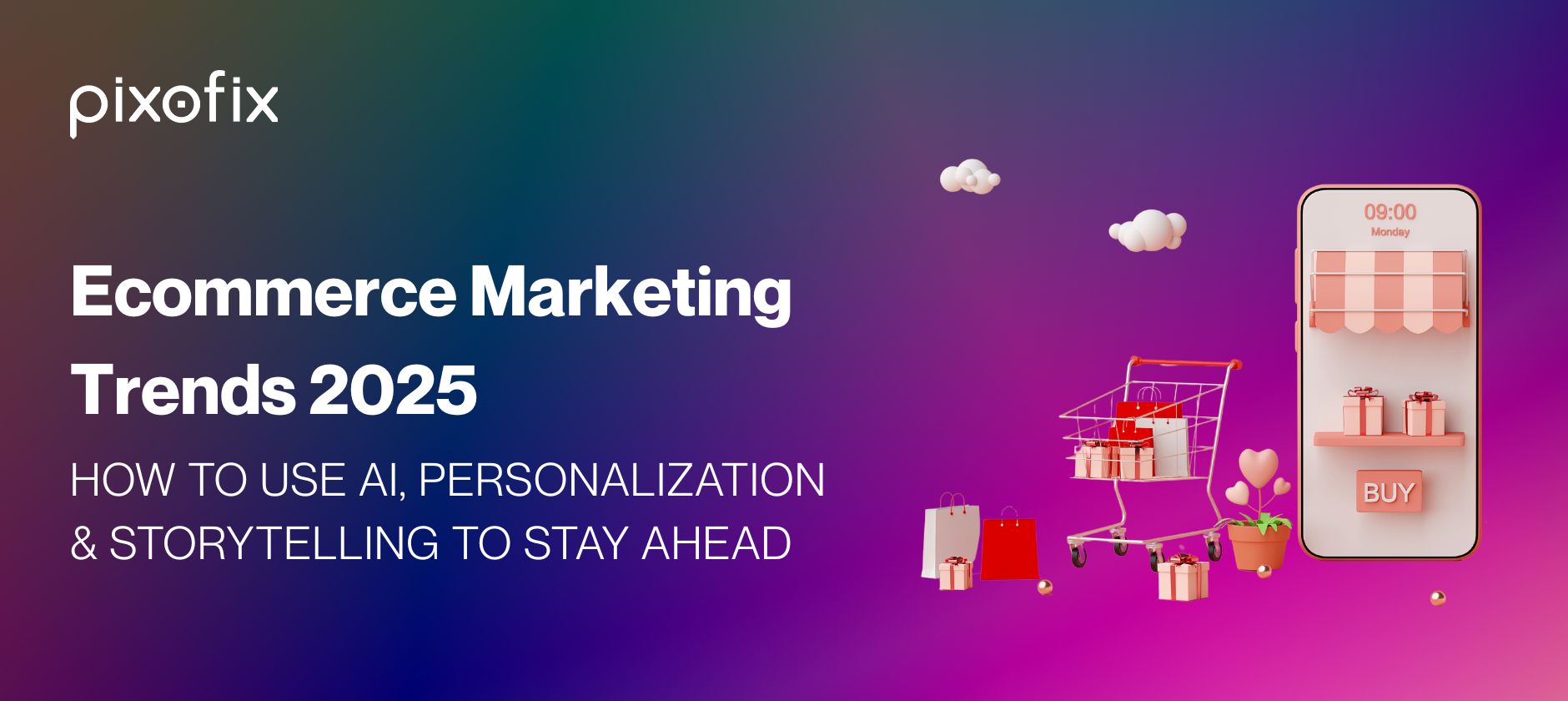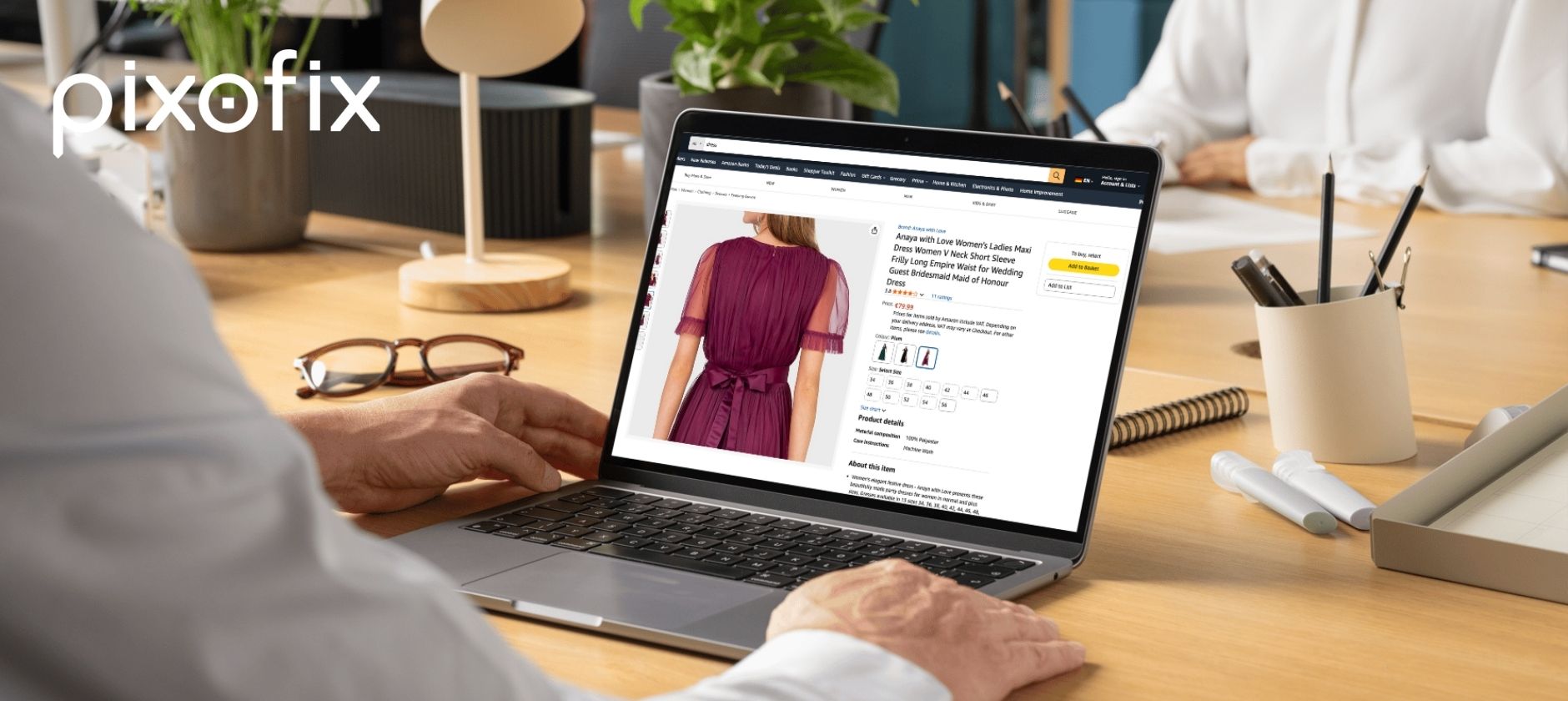Importance of Ecommerce Marketing Trends Today
Adapting to Consumer Behavior Changes
Shopping habits shift fast, and marketing strategies need to sprint to keep up. Consumers now expect frictionless experiences, smart suggestions, and instant gratification. They compare products while swiping through stories, not browsing aisles. And they’ll drop off if your visuals or scroll performance don’t match that pace.
Tapping into current trends isn’t about being trendy — it’s about understanding what today’s buyer actually responds to. Behavior-driven campaigns fed by real-time insights can cut through noise. Miss the mark, and you're marketing to shoppers who no longer exist.
Staying Competitive in a Saturated Market
The barrier to launching an ecommerce brand is lower than ever. So, standing out isn’t a nice-to-have — it’s survival. Following marketing trends ensures you're not working with stale playbooks while fresher brands eat your share.
Whether it’s pivoting to short-form content, embracing live commerce, or speeding up your photo production pipeline through AI-powered tools like Pixofix, staying current opens the door to sharper engagement and fewer missed opportunities. In markets flooded with options, relevance is the new currency.
Aligning Strategies with Technological Advances
Marketing tech doesn't sit still. From AI-fueled insights to shopping directly through visual search, ecommerce is becoming as much about engineering as it is about storytelling. Smart brands don’t just react to tech — they plan with it.
Whether that means automating retouching workflows with partners like Pixofix or optimizing content for new discovery methods like voice and AR, alignment with tech trends ensures your strategy scales, adapts, and leads.
Key Ecommerce Marketing Trends
AI-Driven Customer Insights
AI tools now do more than recommend products. They map out behavioral patterns, spot buying signals, and find gaps in the market you'd never spot manually. That intel powers not just smarter ads, but sharper creative direction — including how you present visuals, sequence photos, and pace retargeting.
For teams working with visual production partners like Pixofix, these insights can guide which product angles or features to showcase first. AI insights let you meet your audience before the first click.

Augmented Reality Enhancements
AR has grown from novelty to necessity in some verticals. Shoppers want to "try on" sunglasses or see how a chair fits in their room — before committing to checkout. These experiences cut return rates and boost confidence. But they only work if the source visuals are spot-on.
That means products need to be shot, edited, and rendered with precision. Pixofix helps brands prep visuals for realistic AR integration, ensuring lighting, angle, and texture match what users would expect in their own space.
Voice Search Optimization
More shoppers are talking to their devices instead of typing. Voice-driven discovery is growing, but few brands optimize for how people speak instead of type. Keywords shift from “running shoes men’s” to “what’s the best lightweight running shoe for marathons?”
Optimizing content for voice means changing how you write product titles and descriptions. It also means making sure your visual content backs up the answer — because the shopper might land on your PDP from a single voice cue. If your visuals feel dated or don’t match expectations, bounce rates spike.
Social Commerce and Influencer Marketing
Platforms like TikTok and Instagram aren’t just for discovery anymore. They’re direct sales channels. Influencers don’t just promote — they sell. And branded shops built into feeds make impulse buys frictionless.
But visuals must match the environment. For scroll-first platforms, content can’t feel like it was made for a catalog. It needs pace, polish, and authenticity. That’s where ecommerce retouching partners like Pixofix come in — giving influencer assets brand cohesion and speed, without killing spontaneity. Fast turnaround here isn’t a luxury, it’s table stakes.
Flexible Payment Options
Buy Now, Pay Later models aren’t a gimmick — they’ve become expected. Especially for Gen Z and lower-ticket impulse purchases. Integrating flexible payment options can drive conversion, but only if the full buying journey supports urgency.
That includes how you showcase product variants, limited stock visuals, or countdown graphics. These micro-moments make people commit faster. Tools and services that can produce those visuals at scale — like Pixofix — help marketing teams keep up without losing creative cohesion.
Hyper-Personalization Strategies
Data Utilization for Personalized Experiences
Personalization starts with data, but few brands do it well. It's not just about popping a person’s name into an email. It’s about understanding what they browsed, skipped, left in the cart — then translating that behavior into tailored visuals and offers.
If someone lingers on product videos but never clicks gallery images, rethink how those visuals are sequenced. Services like Pixofix help build personalized asset sets that match consumer behavior — so the content adapts just like the message does.
Tailoring Content Based on Consumer Behavior
Your audience doesn’t all engage the same way. New visitors need trust, returning ones want novelty, and loyalists crave exclusivity. Segmenting content by behavior means showing different imagery, headlines, and even models to different cohorts.
This goes beyond basic A/B testing. It’s a creative loop. Teams working with Pixofix often develop multiple visual variants for each product — and let marketing decide which one fires, based on who's watching. That’s personalization that actually converts.
Implementing Dynamic Pricing Models
Dynamic pricing thrives on real-time data — but it needs a storytelling layer to feel logical, not random. If prices shift, visuals need to support perceived value. That could mean updating badges, limited offer graphics, or driving urgency with time-sensitive layouts.
Because these visuals change often, speed is essential. Automation with a human finish becomes the sweet spot. Brands partner with Pixofix to scale dynamic promo assets quickly, without making every price drop feel desperate.
The Rise of Mobile Commerce

Mobile-First Design Considerations
Most buyers shop on their phones, but too many ecommerce experiences are still desktop-first. Tiny buttons, cropped images, slow-loading galleries — they kill conversions.
Visuals need to be designed and cropped specifically for the mobile canvas. Faces need to stay visible, textures must still pop, and gestures like swiping or tapping should feel intuitive. Working with a production partner like Pixofix ensures mobile execution isn't just a resized desktop version but a crafted experience.
Seamless Checkout Experiences on Mobile
Shoppers drop off hardest right before success — at checkout. If that last mile's clunky on mobile, everything before it goes to waste. One-tap payments, autofill options, and secure-feeling flows need to be built in.
But visuals also play a role. Clean, distraction-free product thumbnails during checkout reinforce trust. Retouched images should align with earlier product views to create continuity. That visual consistency keeps hesitation low and completion rates high.
App vs. Mobile Website: Which is Better?
For retention? Apps win. For first-time conversion? Sites win. What matters is how your mobile experience supports the context. Apps can push curated visuals and exclusive content. Mobile sites must load fast and deliver clarity.
Either way, visual content must be optimized differently. An app user expects deeper storytelling, while a mobile browser visitor wants fast and convincing. Teams like Pixofix help brands scale dual pipelines — so the right version of the image lands on the right screen, with no extra lift from the brand.
Embracing Sustainability in Ecommerce
Best Practices for Sustainable Marketing
Sustainability isn’t a buzzword. Shoppers want proof. Brands should focus on transparency, not just taglines. That means using storytelling across more than just copy — visuals count too.
Feature real packaging, show shipping materials, document your process. The more visual honesty you bake in, the more believable your message becomes. Production partners like Pixofix can retouch sustainably without over-glamorizing — keeping imagery clean but grounded.
Featuring Eco-Friendly Products Effectively
Eco-products need more than a green badge. They need visual context. Show materials through macro shots. Use natural light palettes. Communicate care through image curation, not just messaging.
Great sustainable ecommerce marketing blends realism with aesthetic — and that balance comes from intentional editing. Pixofix helps brands tell visual stories that highlight sustainable values while staying conversion-focused. Quiet impact. Subtle cues. Big difference.## Chat Marketing and Customer Engagement
Enhancing Customer Service through Chatbots
Smart chatbots aren't about replacing humans. They're about meeting customers at scale, without the delays. When done right, they blend service and sales in one thread. A bot can handle size questions, recommend similar products, or even show bundle options based on cart contents—all before a human ever needs to jump in.
The real advantage? 24/7 responsiveness. Especially during launches, promos, or high-season spikes, bots keep things moving. But make sure the handoff to human support feels seamless. Automation should never break trust—it should build it.
Using Messaging Apps for Direct Sales
Customers are already chatting on WhatsApp, Facebook Messenger, and Instagram DMs. Now, they're shopping there too. For ecommerce stores, these aren’t just support channels—they’re high-intent buying lanes.
Triggering personalized product drops, restock alerts, or limited-time offers via these apps can drive rapid conversions. The key is tone and timing. Keep it conversational, not salesy. Use visuals tailored for small screens and fast viewing. And make sure every sent image matches the brand vibe—lighting, layout, tone. Working with production teams who get this nuance, like Pixofix, keeps your visuals sharp and on-voice across every platform.
Visualization Techniques in Product Marketing
Before-and-After Comparisons in Product Pages
Shoppers need evidence, not promises. A clean before-and-after visual hits instantly. Whether it’s skincare results, stain removals, or room makeovers, this format builds credibility in seconds.
But sloppy execution kills trust. Shadows need to match, angles must align, and editing should feel invisible. This isn’t about exaggeration—it’s about precision storytelling. Working with visual partners like Pixofix ensures your transformations look real, not rehearsed, while carrying consistent branding across all assets.
The Impact of Professional Photo Retouching
Raw product photos rarely convert. But there’s a line between polished and plastic. Professional retouching should enhance realism, not overwrite it. This is where brand story meets image treatment—color balance gets tied to mood, while skin tones or textures align with diversity and authenticity goals.
The best editing doesn’t announce itself. That’s why ecommerce photo teams are shifting from freelance patchwork to integrated partners like Pixofix—where editing pipelines sync with your campaign schedules and creative intent. AI speeds up technical lifting, but human touch still gives each photo that final emotional clarity.
Multi-Channel Marketing Approaches
Integrating Online and Offline Experiences
Today’s shopper doesn’t see the line between online and offline. QR codes in stores trigger digital promos. BOPIS models bring web carts to the curb. Consistency across these touchpoints matters as much as convenience.
So do visuals. That same product should feel identical on a digital display and in a retail lightbox. Working off unified style guides and visual workflows ensures less friction and more brand recall. Especially with tools and retouching partners that support multi-output campaigns—one shoot, many formats, all aligned.
The Role of Email Marketing in Ecommerce
Email’s not dead. It's your highest intent channel—if you treat it right. That means segmenting more, designing smarter, and keeping visuals lean but high-impact. Your header image should do more than just “look nice.” It should carry the conversion.
Short-run promotions, loyalty campaigns, abandoned cart flows—they all rely on visual recognition. If the product doesn’t look right—or looks different from the PDP—they’re gone. Using streamlined editing pipelines with fast turnaround (like Pixofix offers) helps retailers match email visuals to current inventory, lighting, or seasonal themes without lag.
Tools and Technologies to Enhance Ecommerce
Essential Platforms for Ecommerce Success
Every ecommerce brand needs a functional tech stack. That includes site builders like Shopify or BigCommerce, CRM tools to keep customer data tight, and workflow management systems that get everyone on the same page. But marketing doesn’t work unless visuals work—and that’s often where tech gets messy.
Integrating tools like Pixofix into asset production brings coordination to chaos. No more lost files, misedited SKUs, or misaligned retouching. When your production platform is built with ecommerce needs in mind—quality, consistency, speed—it stops being a bottleneck and starts being a growth lever.
Analytical Tools for Measuring Campaign Performance
You can’t improve what you don’t track. Campaign performance needs more than click-through rates. You want heat maps, A/B insights, attribution breakdowns. Tools like Google Analytics 4, Hotjar, or Klaviyo’s advanced reports help decode behavior, but you have to translate that into action.
Did the red background outperform the white? Did the lifestyle shot carry more scroll depth on mobile? Feeding those answers back into your creative process closes the loop. Teams that pair data insights with agile imagery production—often via editing partners like Pixofix—can test, refine, and deploy faster than the rest.
Metrics to Measure Ecommerce Success
.png)
Key Performance Indicators to Track
Sales are the final goal, but chasing revenue alone hides what’s working. High-performing ecommerce brands track KPIs like:
- Customer Acquisition Cost (CAC)
- Average Order Value (AOV)
- Customer Lifetime Value (CLV)
- Cart Abandonment Rate
- Return Rate
Each one shapes your marketing mix. A rising CAC could signal creative fatigue. A spiking return rate? Maybe your product visuals mislead. That’s why every stat needs a visual audit alongside it. Cohesion in imagery keeps expectations aligned—which keeps returns down.
Analyzing Conversion Rates Effectively
Conversion rates tell you one thing: did they say yes? But understanding why they didn’t says more. Maybe CTA placement missed the window. Maybe image sequencing didn’t sell the experience. Or maybe mobile visuals got crushed in compression.
Dissecting conversion shortfalls often starts with creative review. Marketing teams working with production partners like Pixofix can rapidly generate alternate versions, test them in real time, and isolate variables. Sometimes one tweak—a different model, a tighter crop, a faster load—makes all the difference.## Common Mistakes to Avoid
Overlooking Mobile Optimization
Mobile drives the majority of ecommerce traffic, yet some brands act like it’s still an afterthought. If your site loads slowly, buttons vanish off-screen, or images take forever to render, you lose buyers in seconds.
Mobile optimization isn’t just about resizing. It means tailoring touchpoints: product visuals should crop cleanly on smaller screens, navigation needs to flow with a thumb swipe, and checkout should feel instinctive. Even your retouched images matter. Lighting, contrast, and clarity have to hold up under compression. Partners like Pixofix make sure visuals stay sharp and scroll-worthy—even when mobile bandwidth doesn’t cooperate.
A clunky mobile experience burns trust fast. Fixing it isn't just UX hygiene—it’s a conversion multiplier.
Neglecting Customer Feedback
Ignoring what shoppers are actually telling you kills momentum. Reviews, DMs, even product returns—they’re all feedback loops. Brands that don’t tap into that data end up polishing flaws, not solving them.
When a customer mentions poor color accuracy or misleading sizing, it’s not just a complaint—it’s a visual fix waiting to happen. Maybe your lifestyle imagery oversold the texture. Or your product angles skipped a crucial feature. Retouching teams like Pixofix help brands close this gap, refining imagery so it matches real-world usage and expectation.
The smartest insight often comes from the dissatisfied. Listen first, then adjust your visuals, messaging, or UX flow before running the next campaign.
Optimization Tips for Ecommerce Growth
A/B Testing for Effective Campaigns
Guesswork is dead weight. A/B testing replaces intuition with clarity. Whether you're testing image sequences, CTA placement, or background color, small creative tweaks can trigger big shifts in performance.
Test visuals like you test copy. Is the model-centric shot outperforming the flat lay? Does a darker background drive higher clicks on mobile? Pair your split tests with agile editing partners like Pixofix, who can deliver variations quickly while preserving consistency in lighting and style. That way, you’re testing creative direction, not production quality.
The key isn’t testing once. It’s building a loop—test, refine, retest. Let the data steer the look.
Leveraging Customer Reviews for Trust
Reviews convert better than any headline—if you show them right. Highlight the visual ones. Pull in UGC with actual wear, use, or unboxing moments. Trust skyrockets when shoppers see peers using the product, not just models performing.
But don’t let UGC clash with your brand feel. Use subtle retouching to unify visuals: adjust exposure, tweak colors, remove distractions. Pixofix works with ecommerce teams to strike that balance—authenticity kept intact, but elevated to match your brand’s tone.
And don’t bury reviews at the bottom. Feature them near PDP images. Let shoppers experience the product through customer eyes, then see the polished version. That contrast earns belief.






.png)

.png)
